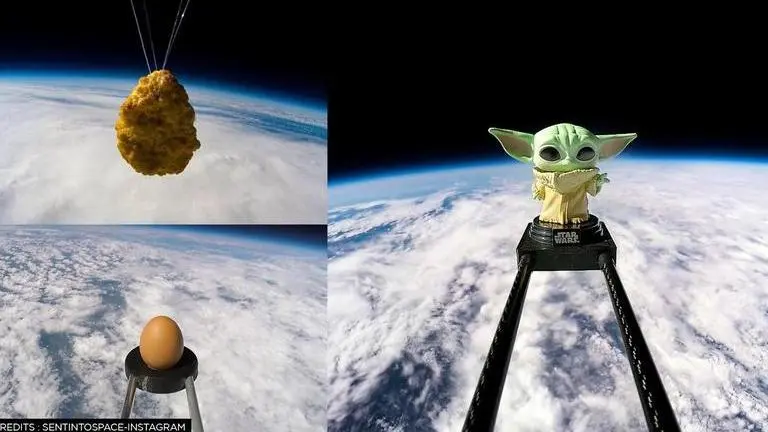Updated 3 July 2021 at 18:24 IST
UK firm uses weather balloons to launch potatoes, chicken nuggets into space; here's how
Dogecoin, samosa, seeds and a myriad range of other items have been tossed into outer space, ever since humankind learnt the science of crossing gravity.
- Science News
- 2 min read

Dogecoin, samosa, seeds and a myriad range of other items have been tossed into outer space, ever since humankind learnt the science of crossing the planet’s gravitational pull. While rocket propellants continue to be the most famed method for sending scientific supplies into outer space, the same is not required to send lightweight items to seemingly unreachable altitudes. A more cost-effective method using a High Altitude Balloon or simply weather balloon has gained fame since the last decade and has been labelled as “Poor man’s space programme”.
Sent into space
A company called Sent Into Space, founded by British Mechanical Engineers Chris Rose and Alex Baker, were the first ones to explore the technology. In December 2010, the duo sent a balloon into space and uploaded the video of their journey on YouTube. Former PhD students at the University of Sheffield, England, Chris and Alex bought a weather balloon for sale from eBay and a satellite tracker and built a payload out of remnants of foam found in their department’s workshop.
Since then, the company has completed more than 500 launches and has sent a variety of items into space including chocolates, silver coins, chicken nuggets, Barbie dolls amongst other items into space.
How does a weather balloon work?
The traditional ‘weather balloon’ launch kit comes with a helium balloon, a parachute, container (for carrying the payload), tracking device and computer system that records data of the flight. This includes GPS, altitude, pressure, humidity, temperature and acceleration.
Advertisement
The balloon is set to rise into the earth’s atmosphere. According to NASA, the balloon typically rises at a speed of 1,000 feet per minute. It takes about two hours to reach a float altitude of 120,000 feet. Once the balloon reaches its optimum height, the pressure on the balloon drops and it expands until it bursts. Once it blasts off, a parachute opens and it takes about an hour to come down. With the help of GPS tracking, one can predict where the balloon will make its landing and retrieve the payload.
Image: Sentintospace/Instagram
Advertisement
Published By : Riya Baibhawi
Published On: 3 July 2021 at 18:24 IST
